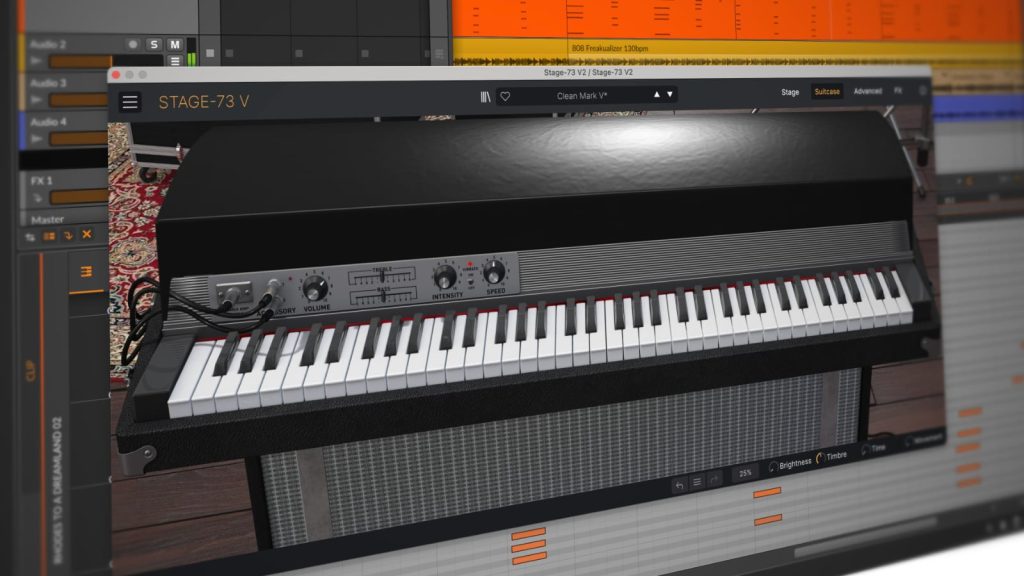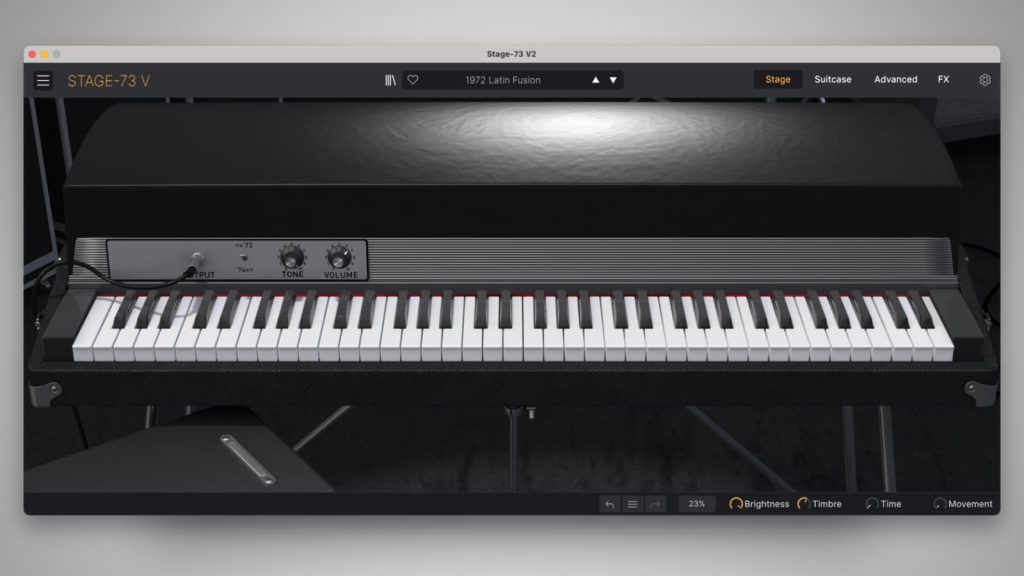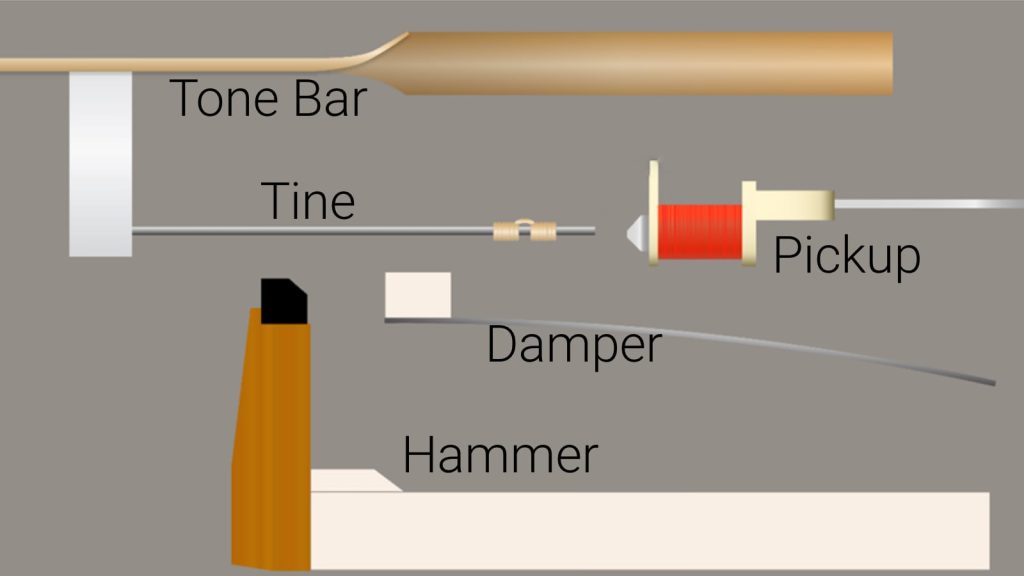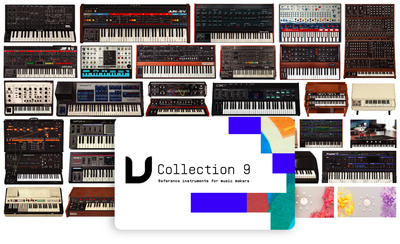Electric Piano Love
Anyone who owns an original Fender Rhodes from the ’60s or ’70s has formed a deep bond with their instrument over the decades. However, the unique and vibrant sound and playability of mechanical sound production often go hand in hand with several weaknesses, resulting in a love-hate relationship.
The keyboard, the hammer action, the dampers, the tines, and the tone bars all require maintenance. Last but not least, a quality Rhodes needs a repair kit with spare parts. You also want a good preamp, effects, and a tube amp, preferably a Fender Twin Reverb.
The Arturia Stage 73 V2 combines all this in a single plug-in or standalone program, including voicing options to create custom Rhodes sounds. While the voicing features are well worth exploring, there are also plenty of presets to get you started right away.








